Rashomon
Introduction
Would it have been too much hassle just to wait a while longer? I'm one of the 'now' generation, and can fully understand the need to have the next thing immediately, if not sooner, but sometimes you wonder if a little patience wouldn't be amiss. Reading up a bit on Rashomon, I learnt that the film is currently undergoing the digital makeover at Lowry, as have so many other classic films. Dirt and print damage will be digitally removed, and the film will get the 4k treatment that will preserve it for future generations. The new print has its big screen debut in mid-September, which obviously means that the film I'm looking at here is not the crystal clear, pristine masterpiece, but yet another iteration of the prints that are already out there. However, Rashomon has only seen release in the UK on a barebones, hard-subbed BFI disc, and it is long overdue the special edition treatment. Besides, the restored print is just the sort of thing that Bluray players are for…
Using the camera as a subjective viewpoint is old hat now. Telling a tale from different perspectives is a staple of cinema and television, and it's hard to think of a time that it hasn't been so. Click on the movie connections bit of Rashomon's IMDB page, and you'll see a host of references, spoofs and homage. It's a device that has been used effectively by directors like Tarantino and Park Chan Wook, in films like the Usual Suspects and Courage Under Fire; it's even been used in an episode of Star Trek! But for everything there has to be a first time, and the first time that the multiple viewpoints device was used in cinema to mass audience acclaim was Akira Kurosawa's 1950 film, Rashomon. Many would argue that it has never been bettered.
Set in 11th Century Japan, a deluge sends three men seeking shelter in the Rashomon, the ruined gate at the edge of the capital city. The weather aside, the priest and the woodcutter are in a state of consternation, although it appears to the commoner that joins them that they have quite a tale to tell. Indeed, they have four tales to tell, of a horrific crime that they were loosely associated with. A noblewoman was raped, her samurai husband murdered, and a bandit named Tajomaru captured as the man responsible. The priest had met the couple prior to the attack, while the woodcutter had found the body of the samurai, and both were called to bear witness at the trial. As the commoner listens, the two other men relate the testimony of Tajomaru, the surviving widow, and through a medium, the testimony of the murdered samurai. Then it becomes apparent that the woodcutter did more than just find the corpse, and there is a fourth side to the story. But none of the stories match…
Picture
I'd never seen Rashomon before, let alone sampled one of the previous DVD releases, so I'm not in a position to do a quick compare and contrast. Fortunately for that purpose, there is DVD Beaver, an invaluable resource if you are interested in world cinema, even if their verdict usually boils down to Criterion.
It looks as if Optimum started off from first principles for this release of Rashomon, as it certainly bears no resemblance to any of the other releases that I have read about. The 1.37:1 print is presented non-anamorphically, with slight black bars at top and bottom. It also looks as if there is more picture information in the frame, at least compared to the DVD Beaver screenshots, less, if anything at all is cropped from either edge. While print damage is apparent at times, you can't get away from the age of the film, with the odd flicker, fleck of dirt, and scratch, it doesn't look bad for a film approaching its seventh decade. I get the feeling though that it's been accomplished with some optical sleight of hand. The version of Rashomon here is noticeably brighter than the screenshots on that site, even brighter than the Criterion version, which in effect masks the minor signs of age, although it does have the effect of reducing detail into the bargain.
All of this pales into insignificance at the whopping great elephant in the room of an NTSC-PAL transfer. The BFI disc was a native PAL disc, the Australian Region 4 disc is PAL, and when you have a film source, there's absolutely no need to go for a standards conversion, especially as it appears here, that Optimum have started again with Rashomon, rather than sourcing an existing version. So expect the usual issues of ghosting (minor in this case), a lower resolution, and a bit of judder in pans and an overall softness.
Sound
If there is a bright side to this, you won't have to hear the pitch correction associated with a 4% PAL speed-up, although whether that makes a difference on a DD 2.0 mono track that is almost sixty years old is questionable. The audio shows its age, suffering from pops, crackle and minor hiss, as well as a little distortion in more strident moments. It's nothing that you wouldn't expect from a film of this vintage, and it never affects the viewing experience. Optional subtitles are provided, and they are clear and free of error. They also partially subtitle the credits, which is a useful thing.
Extras
This is where things improve over the original BFI release. We have extras, beginning of course with the necessary theatrical trailer, which here runs to nearly 4 minutes.
I only received the check disc, but there ought to be a booklet in the retail version, a variation of that in the Criterion release, which reprints the two stories by Ryunosuke Akutagawa that the film was based on, In A Grove, and Rashomon, as well as an excerpt of a book about Kurosawa and Toshiro Mifune.
John Boorman on Rashomon lasts 6 minutes, and the veteran director talks about the influence the film had on him and his contemporaries, as well as recounting a meeting with Akira Kurosawa. This looks to be exclusive to the UK release.
Not exclusive is the main featurette, A Testimony as an Image: Rashomon, which comes to 68 minutes in length. This documentary appears to be identical to that on the Region 4 release, featuring the original crew, writer and composer (or rather acquaintance of the composer). We start with an interview with Shinobu Hashimoto, who originally adapted Rashomon and In A Grove, although it was Kurosawa who finished the final script when Hashimoto fell ill. Then members of the original crew, including the assistant directors, the sound department, the lighting assistant and cinematographers reunite to talk about the film and their experiences making it. There are also some separate interviews with people who were involved in the film's production. It's an interesting retrospective, especially fifty years and more after the fact.
Conclusion
… And writer's block strikes. Rashomon is one of those films that are by now critic proof. It's truly a classic by every measure of the term, and immune to criticism. A glowing review simply means jumping on a rush hour Northern Line tube train of a bandwagon, while a negative review is taken as a reviewer feeding his or her ego. Anything I can say at this point, hastily put to disc, will hardly be anything that hasn't been said before, by people more qualified, and possessing the time and motivation to craft a tribute a lot less ephemeral and fleeting than an online review. That said, I really enjoyed Rashomon.
There's something to be said for the shorter film, although they usually crop up earlier in a director's career, when money is tight, and studio confidence is limited. That's when a director has to be efficient, concentrate on character and story, keep things tight and personal. The cast of thousands, the epic scale and the cinemascope comes later in a successful director's career, and just as A Fistful of Dollars is to The Good, The Bad and the Ugly for Leone, or Duel is to War of the Worlds for Spielberg, so Rashomon is to Seven Samurai. This is an enthralling story, elegantly told, with a small cast and just a few locations and sets.
Often imitated, but never bettered, that's the claim for Rashomon, and it's immediately apparent why. The multiple flashback, alternate perspective technique has been used countless times over the years, and it has mostly been about unravelling mysteries, or just revelling in the storytelling opportunities the method allows. While the multiple perspective may be new for Rashomon, it's still efficiently applied, and the mystery certainly invites debate, but it's not the central point of the film. Rashomon at its heart is a study of human nature, of what drives and compels us. The setting is important, the ruined gate at the edge of the capital is a sign of a society in decline. The 11th Century was the end of the Heian period in Japan, with all the civil strife and criminality that implies. It gives an immediate context to the events of the film, the crime that occurs in the forest.
It's all about perspective, there is no truth to the matter, and filtered as it is through the accounts of the woodcutter and the priest, the accuracy of the accounts become even more suspect. What becomes clear are the all too human failings of the people involved, it's about pride, ego, frailty and hypocrisy, and each account of the participants is tailored to show him or her in the better light, even the bandit who has a reputation to uphold, even as he faces execution. It's easy to judge right and wrong based on just one testimony, but as we learn more, the identity of the victim, perpetrator and instigator become interchangeable. Then there is the twist as we hear the final account, and realise that the film hasn't been about the crime, it's been about the characters of the woodcutter, priest, and commoner all along, and it's how they react to the crime that defines their characters. The commoner is just in it for himself, enjoying a bit of juicy gossip, while the priest stands aloof, lamenting the lack of good in man, but doing little to seek it out. The woodcutter is the more complex character, torn between right and wrong, wanting to do the right thing, but hampered by a sense of self-preservation, and a desire to remain uninvolved. His is the most hypocritical stance, and emblematic of a society in decay.
It's a bleak vision; a trawl through the more unsavoury aspects of humanity, man's baser instincts, and while it is a film that you can't turn away from, it's not exactly uplifting. But then at the last, Kurosawa throws in one final twist, an element of hope. It's a reminder that mankind can aspire to better himself, and even at our darkest there is something worth holding on to. The film takes on a wholly different timbre, and all of a sudden the previous 90 minutes have somehow become utterly inspirational and moving.
Rashomon is a film that deserves to be seen. I just don't think it ought to be like this. If it were down to me, well I would wait until that new print made its DVD and Bluray debut, but if you have to have Rashomon right now, both the Criterion disc and the Australian release have copious though differing extras. The region 1 disc is NTSC quite naturally, while the region 4 disc has a proper film-PAL transfer (just like the old BFI disc). While the Optimum release may finally bring some of those extras to the UK, there's no excuse for a standards conversion for a film of this significance.
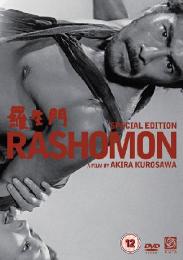
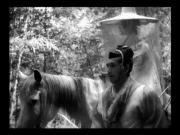
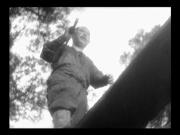
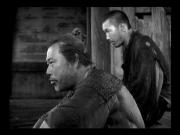
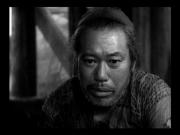

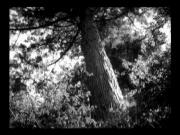
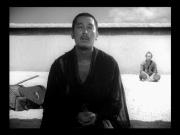
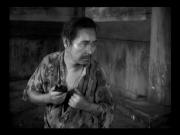
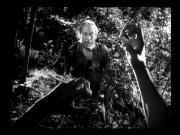
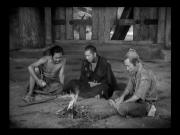

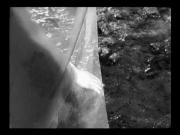
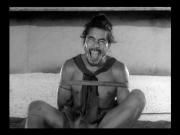
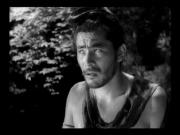
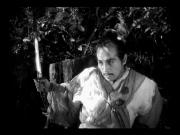
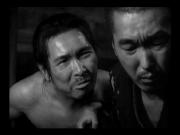
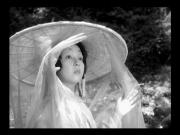
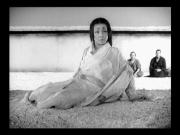
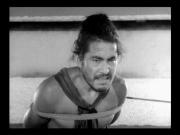
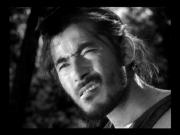
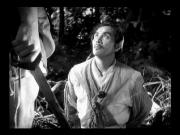

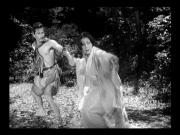
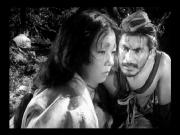
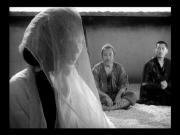
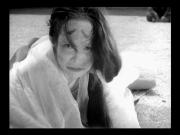






































Your Opinions and Comments
Be the first to post a comment!